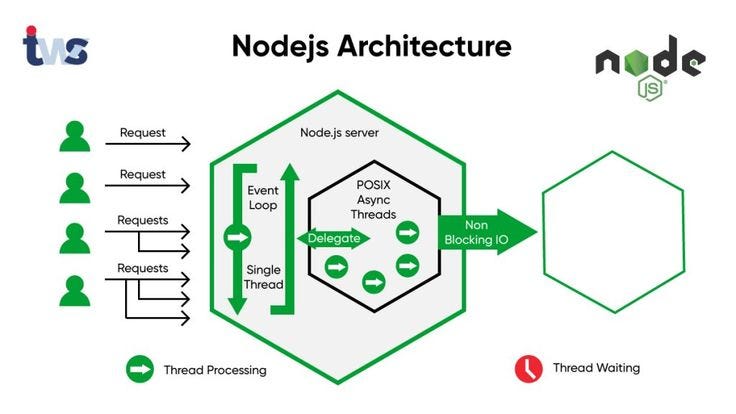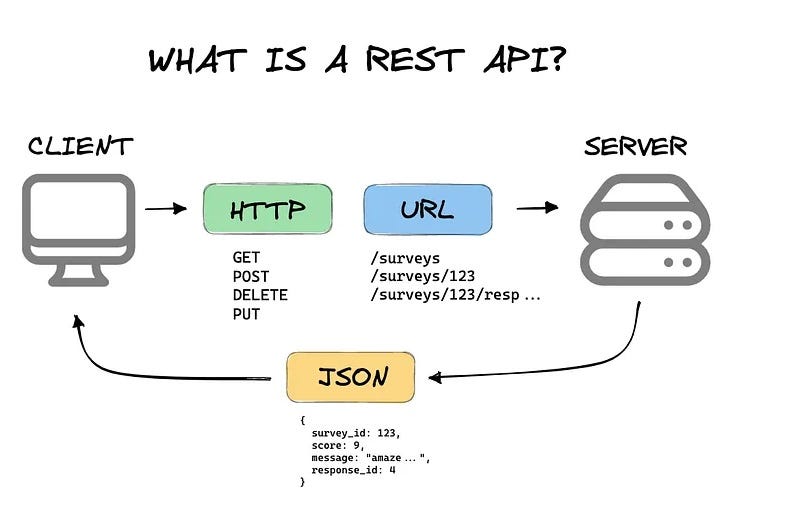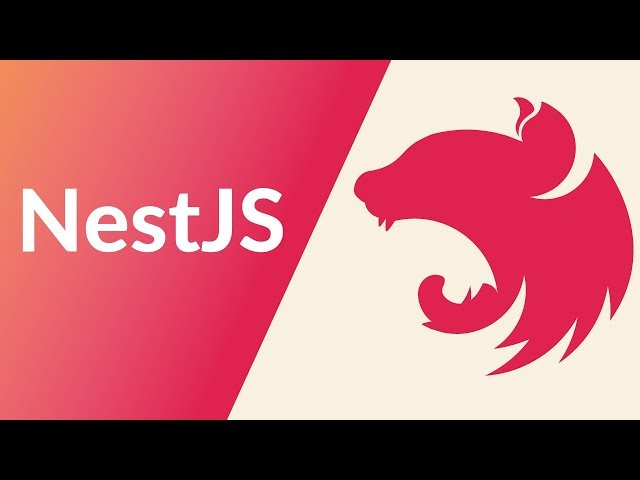The Architect’s Choice: Why NestJS is Redefining Node.js Development
In the ever-evolving world of server-side development, the Node.js ecosystem has long been dominated by minimalist frameworks like Express.js and Koa. While their flexibility is a major draw, it often leaves architectural decisions entirely up to the developer, leading to potential inconsistencies and maintenance challenges as projects scale. This is where NestJS enters the scene, offering a refreshing, opinionated approach to building efficient, reliable, and scalable server-side applications. The latest NestJS News is that its popularity continues to surge, positioning it as a go-to framework for enterprise-grade projects.
Built with and for TypeScript, NestJS leverages modern JavaScript features while providing a modular, out-of-the-box application architecture. It combines elements of Object-Oriented Programming (OOP), Functional Programming (FP), and Functional Reactive Programming (FRP). Under the hood, it uses robust HTTP server frameworks like Express.js (the default) and can be configured to use Fastify for even better performance. By providing a structured, layered architecture inspired by frameworks like Angular, NestJS solves many of the common problems developers face in the Node.js News landscape, allowing teams to focus on business logic rather than boilerplate. This article will provide a comprehensive technical deep dive into the core concepts, practical implementations, and advanced features that make NestJS a powerhouse for modern backend development.
Section 1: The Core Pillars of NestJS Architecture
NestJS enforces a strong architectural pattern built on three main components: Modules, Controllers, and Providers (often called Services). This modular structure is fundamental to creating organized and maintainable codebases. Understanding how these pieces fit together is the first step toward mastering the framework.
Modules: The Building Blocks of Organization
Modules, decorated with @Module(), are the primary way to organize your application’s components. A module encapsulates a closely related set of capabilities. It can group controllers, providers, and even other modules, creating a clear boundary for a specific feature domain (e.g., a UsersModule or OrdersModule). The root module of the application, typically the AppModule, ties everything together.
Controllers: Handling Incoming Requests
Controllers are responsible for handling incoming requests and returning responses to the client. They are decorated with @Controller(), which takes an optional path prefix. Inside a controller, methods are decorated with HTTP request method decorators like @Get(), @Post(), @Put(), and @Delete() to bind them to specific routes.
Providers (Services): Encapsulating Business Logic
Providers are a fundamental concept in NestJS. Most often, they are services that encapsulate business logic. A provider is a class decorated with @Injectable(). This decorator marks it as a class that can be managed by the NestJS Inversion of Control (IoC) container. This enables Dependency Injection, a powerful design pattern where dependencies (like a service) are “injected” into other components (like a controller) rather than being created manually. This promotes decoupling and enhances testability, a major topic in recent TypeScript News and software design discussions.
Practical Example: A Simple `Posts` Feature
Let’s see how these three components work together to create a simple feature for managing blog posts.

// posts.service.ts
import { Injectable } from '@nestjs/common';
export interface Post {
id: number;
title: string;
content: string;
}
@Injectable()
export class PostsService {
private readonly posts: Post[] = [
{ id: 1, title: 'First Post', content: 'This is the first post.' },
{ id: 2, title: 'Second Post', content: 'This is the second post.' },
];
findAll(): Post[] {
return this.posts;
}
findOne(id: number): Post {
return this.posts.find(post => post.id === id);
}
}
// posts.controller.ts
import { Controller, Get, Param, ParseIntPipe } from '@nestjs/common';
import { PostsService, Post } from './posts.service';
@Controller('posts')
export class PostsController {
constructor(private readonly postsService: PostsService) {}
@Get()
findAll(): Post[] {
return this.postsService.findAll();
}
@Get(':id')
findOne(@Param('id', ParseIntPipe) id: number): Post {
return this.postsService.findOne(id);
}
}
// posts.module.ts
import { Module } from '@nestjs/common';
import { PostsController } from './posts.controller';
import { PostsService } from './posts.service';
@Module({
controllers: [PostsController],
providers: [PostsService],
})
export class PostsModule {}In this example, the PostsModule declares that it manages the PostsController and makes the PostsService available for injection within the module. The controller handles the HTTP routes, and instead of containing logic itself, it calls methods on the injected PostsService to retrieve the data.
Section 2: Building a Practical REST API with Data Handling
A real-world API needs more than just basic routing. It requires robust data validation, structured data transfer, and seamless database integration. NestJS provides powerful, built-in tools to handle these requirements elegantly.
Data Validation with Pipes and DTOs
Manually validating incoming request bodies is tedious and error-prone. NestJS solves this with Pipes. A pipe is a class with an @Injectable() decorator that implements the PipeTransform interface. They can be used for both data transformation (e.g., converting a string to a number) and validation.
The built-in ValidationPipe is incredibly powerful when combined with Data Transfer Objects (DTOs) and the class-validator and class-transformer libraries. A DTO is an object that defines how data will be sent over the network. By adding validation decorators to our DTO classes, we can have NestJS automatically validate incoming payloads.
// First, install the necessary packages:
// npm install class-validator class-transformer
// dto/create-post.dto.ts
import { IsString, IsNotEmpty, MinLength } from 'class-validator';
export class CreatePostDto {
@IsString()
@IsNotEmpty()
@MinLength(5)
title: string;
@IsString()
@IsNotEmpty()
content: string;
}
// posts.controller.ts (updated with a POST method)
import { Controller, Get, Post, Body, Param, ParseIntPipe } from '@nestjs/common';
import { PostsService } from './posts.service';
import { CreatePostDto } from './dto/create-post.dto';
@Controller('posts')
export class PostsController {
constructor(private readonly postsService: PostsService) {}
// ... existing GET methods
@Post()
create(@Body() createPostDto: CreatePostDto) {
// The ValidationPipe (enabled globally) will automatically validate the body.
// If validation fails, it throws a 400 Bad Request error.
return this.postsService.create(createPostDto);
}
}
// main.ts (to enable the ValidationPipe globally)
import { NestFactory } from '@nestjs/core';
import { AppModule } from './app.module';
import { ValidationPipe } from '@nestjs/common';
async function bootstrap() {
const app = await NestFactory.create(AppModule);
app.useGlobalPipes(new ValidationPipe()); // Enable global validation
await app.listen(3000);
}
bootstrap();Database Integration with TypeORM
NestJS is database-agnostic but provides excellent integration with popular ORMs like TypeORM and Sequelize through dedicated packages. Let’s look at a basic TypeORM integration. After setting up the @nestjs/typeorm package and configuring the database connection in our root module, we can define entities and inject repositories directly into our services.
// First, install packages:
// npm install @nestjs/typeorm typeorm pg
// post.entity.ts
import { Entity, Column, PrimaryGeneratedColumn } from 'typeorm';
@Entity()
export class Post {
@PrimaryGeneratedColumn()
id: number;
@Column({ length: 100 })
title: string;
@Column('text')
content: string;
}
// posts.service.ts (updated to use TypeORM repository)
import { Injectable } from '@nestjs/common';
import { InjectRepository } from '@nestjs/typeorm';
import { Repository } from 'typeorm';
import { Post } from './post.entity';
import { CreatePostDto } from './dto/create-post.dto';
@Injectable()
export class PostsService {
constructor(
@InjectRepository(Post)
private postsRepository: Repository<Post>,
) {}
findAll(): Promise<Post[]> {
return this.postsRepository.find();
}
findOne(id: number): Promise<Post> {
return this.postsRepository.findOneBy({ id });
}
async create(createPostDto: CreatePostDto): Promise<Post> {
const newPost = this.postsRepository.create(createPostDto);
return this.postsRepository.save(newPost);
}
async remove(id: number): Promise<void> {
await this.postsRepository.delete(id);
}
}This approach cleanly separates database logic from the controller, adhering to the single-responsibility principle. It’s a pattern that scales well and is seen in other modern frameworks like AdonisJS News, which also emphasizes strong structure and ORM integration.
Section 3: Advanced Features for Robust and Secure Applications
Beyond the basics, NestJS offers a suite of advanced features that are essential for building production-ready applications. These include middleware for request processing, exception filters for centralized error handling, and guards for authentication and authorization.
Middleware for Cross-Cutting Concerns
Middleware is a function that is called before the route handler. It has access to the request and response objects and the next() middleware function in the application’s request-response cycle. It’s perfect for cross-cutting concerns like logging, CORS handling, or header manipulation. You can use any Express-compatible middleware, which opens up a vast ecosystem.
// middleware/logger.middleware.ts
import { Injectable, NestMiddleware } from '@nestjs/common';
import { Request, Response, NextFunction } from 'express';
@Injectable()
export class LoggerMiddleware implements NestMiddleware {
use(req: Request, res: Response, next: NextFunction) {
console.log(`Request... ${req.method} ${req.originalUrl}`);
next();
}
}
// app.module.ts (to apply the middleware)
import { Module, NestModule, MiddlewareConsumer } from '@nestjs/common';
import { PostsModule } from './posts/posts.module';
import { LoggerMiddleware } from './middleware/logger.middleware';
@Module({
imports: [PostsModule],
})
export class AppModule implements NestModule {
configure(consumer: MiddlewareConsumer) {
consumer
.apply(LoggerMiddleware)
.forRoutes('posts'); // Apply to all routes in the 'posts' controller
}
}Exception Filters for Global Error Handling

Unhandled exceptions can crash your Node.js process. NestJS provides a built-in exceptions layer that catches unhandled exceptions across the application. You can create custom exception filters to take full control over the error response format, ensuring your API always returns consistent and meaningful error messages.
// filters/http-exception.filter.ts
import { ExceptionFilter, Catch, ArgumentsHost, HttpException } from '@nestjs/common';
import { Request, Response } from 'express';
@Catch(HttpException)
export class HttpExceptionFilter implements ExceptionFilter {
catch(exception: HttpException, host: ArgumentsHost) {
const ctx = host.switchToHttp();
const response = ctx.getResponse<Response>();
const request = ctx.getRequest<Request>();
const status = exception.getStatus();
response
.status(status)
.json({
statusCode: status,
timestamp: new Date().toISOString(),
path: request.url,
message: exception.message,
});
}
}
// main.ts (to apply the filter globally)
// app.useGlobalFilters(new HttpExceptionFilter());Authentication and Authorization with Guards
Guards are responsible for determining whether a given request will be handled by the route handler or not, typically by examining user roles, permissions, or authentication status (e.g., validating a JWT). NestJS integrates seamlessly with the Passport.js library to implement various authentication strategies. A guard is a class that implements the CanActivate interface.
Section 4: Best Practices, Testing, and the Broader Ecosystem
Writing functional code is just the beginning. To build truly professional applications, you must consider configuration, testing, and performance. The NestJS ecosystem provides tools and patterns to excel in these areas.
Configuration Management
Hardcoding configuration values is a major anti-pattern. The @nestjs/config module provides a flexible way to manage application configuration using environment variables and .env files. It allows for validation of environment variables, ensuring your application starts with a valid configuration.
A Robust Testing Strategy

NestJS’s architecture, particularly its use of Dependency Injection, makes it highly testable. The framework’s CLI generates spec files with boilerplate for unit tests. For testing, the Jest News community standard is the default, but you can easily swap it for others like Vitest. NestJS provides a dedicated @nestjs/testing package that makes it easy to mock dependencies and create a testing module to run unit and integration tests in an isolated environment. For end-to-end (E2E) testing, tools like Cypress News or Playwright can be used to test the full application flow.
Performance Optimization
While NestJS uses Express.js by default, which offers great performance, you can gain an extra speed boost by swapping it with Fastify. The latest Fastify News highlights its low overhead and high-performance JSON parsing. NestJS makes this switch incredibly simple, requiring only a few lines of code change in your `main.ts` file, showcasing the framework’s adaptability.
The Expanding Ecosystem
NestJS is more than just a REST API framework. It has first-class support for building GraphQL APIs, WebSockets, gRPC services, and even command-line applications. This versatility means you can build a complex microservices architecture using a consistent set of tools and patterns. This unified approach is a significant trend, mirroring how frontend meta-frameworks like Next.js News and Nuxt.js News provide a complete toolkit for building applications on top of libraries like React and Vue.js.
Conclusion: Your Next Step in Backend Development
NestJS provides a solid foundation for building scalable, maintainable, and robust server-side applications on Node.js. By enforcing a clear and modular architecture with TypeScript, it mitigates many of the common pitfalls associated with loosely structured JavaScript projects. Its powerful features like dependency injection, a rich module ecosystem, and built-in support for validation, configuration, and testing empower developers to build complex applications with confidence and speed.
Whether you are building a simple REST API for your React News or Vue.js News frontend, a complex GraphQL service, or a distributed microservices system, NestJS offers the tools and structure to succeed. As the Node.js News landscape continues to mature, frameworks like NestJS that prioritize architecture and developer experience are proving to be not just a trend, but the future of professional backend development. The best next step is to dive into the official documentation and start building your own project—experience is the best teacher.

